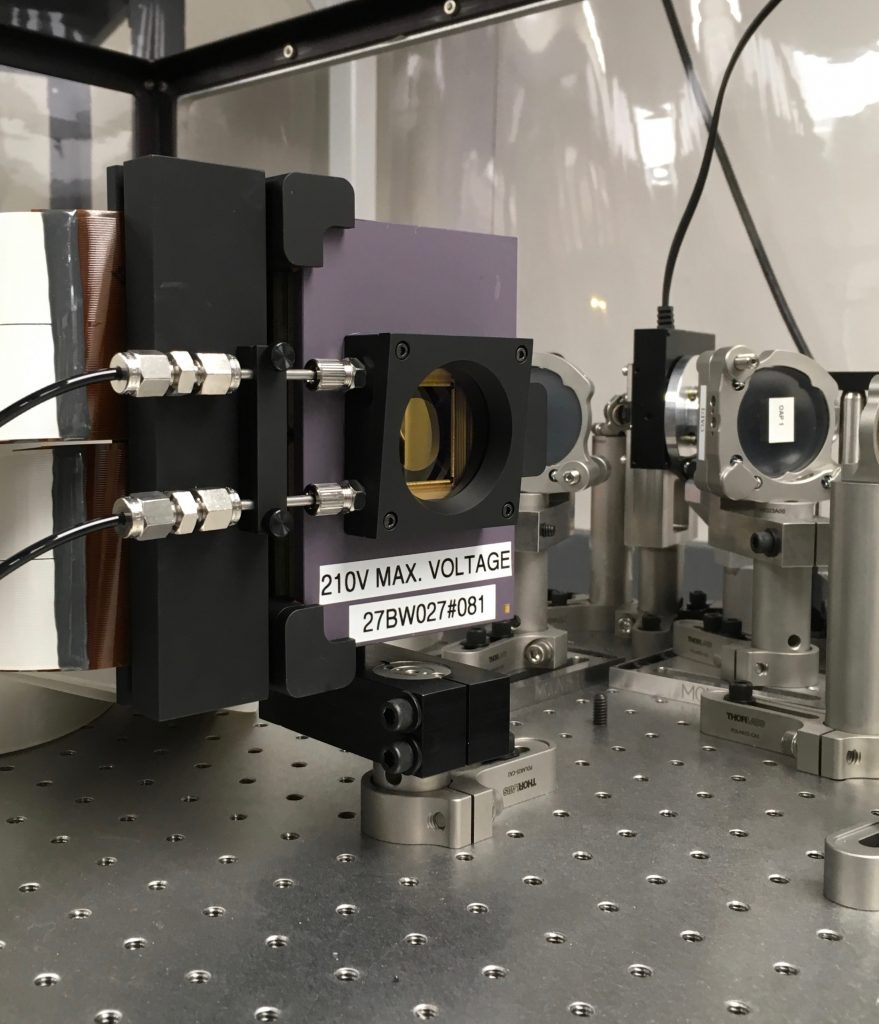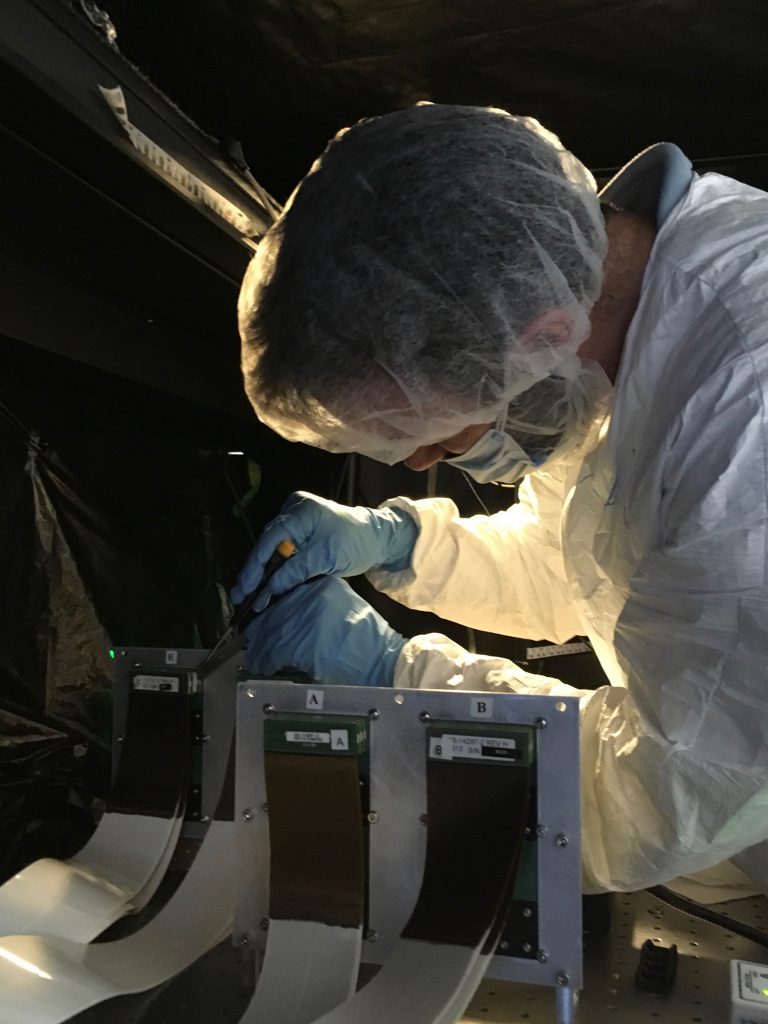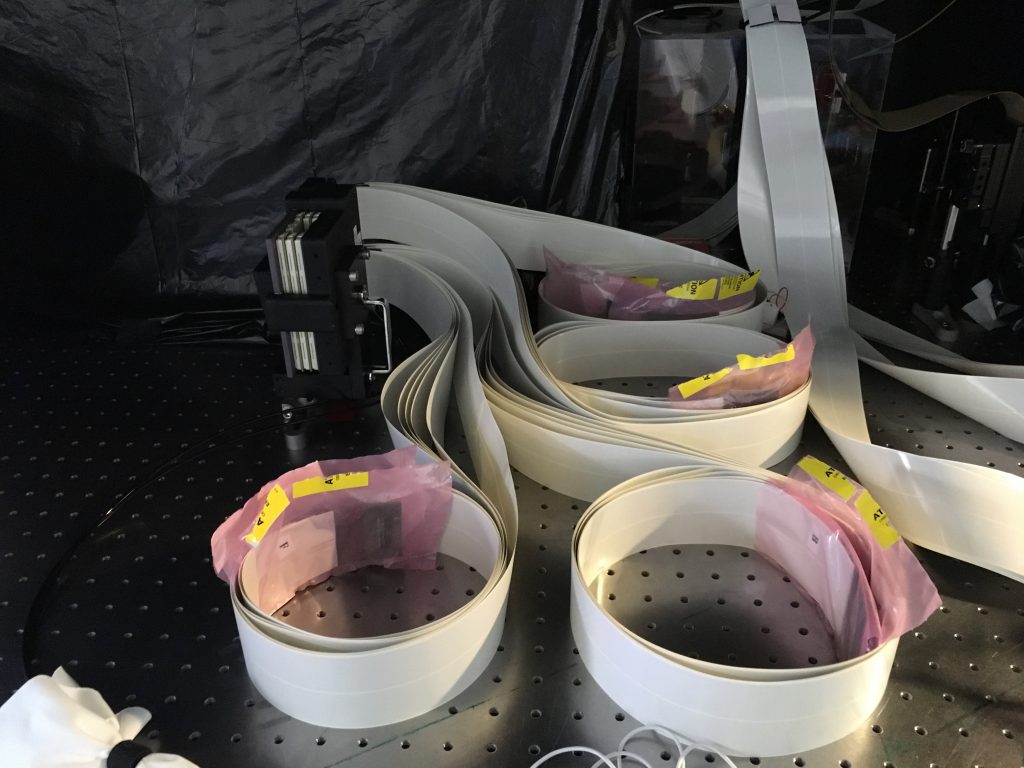As of today, our 2040 actuator Boston Micromachines MEMS deformable mirror (BMC-2K DM, for short) has been moved to MagAO-X instrument optical table. With a cost of roughly three houses, it’s by far the most expensive piece of the whole project. (If you don’t count paying half a dozen graduate students for half a decade.)

So, why is it important? And what makes it so expensive?
Adaptive optics involves first sensing the shape of an incoming wavefront of light to determine aberrations, then deforming a reflective surface to perfectly cancel out as much of the aberration as you can. So, as you might guess, a deformable reflective surface is key.
Extreme adaptive optics is an informal term for the next stage in the evolution of adaptive optics for astronomical high-contrast imaging. We’re running our system faster than predecessor systems like MagAO (in terms of the number of measurements and corrections each second), placing more stringent tolerances on all of our optical surfaces, and using more actuators on our DM. Unlike the MagAO system, which deforms the telescope’s secondary mirror directly, MagAO-X uses three DMs placed at images of the pupil within the instrument enclosure.

The first DM in the optical path, an ALPAO DM97, is a large-stroke device, meaning it can deform a whole 80 µm from one edge to the other. This is about the diameter of a human hair, which doesn’t seem “large”, but for H-alpha (0.656 µm) photons 80 µm is over 120 wavelengths. The flip-side is that it has only 97 actuators. We call this the “woofer” by analogy with speaker systems, since it can only correct aberrations with low spatial frequencies.
The last DM the light will encounter before being imaged onto a detector is another ALPAO DM97. This one is tasked with squashing “non-common path” aberration: basically, any aberrations we’re introducing ourselves within the instrument that aren’t being sensed by our wavefront sensor.

The device we moved today is the “tweeter”, responsible for correcting the high-spatial-frequency modes that generate speckles in our images. These speckles can look awfully similar to planets, and can even persist in a quasi-static way in a series of images. After we’ve taken out the low-frequency content with our woofer, the residual aberration is smaller amplitude but higher frequency.
Our BMC-2K DM lets us cancel out these aberrations to a high degree, resulting in more control over speckle-causing aberrations and less light lost from the core of the image of each star or planet.
Thanks to Jared Males, Kelsey Miller, and Lauren Schatz for the patient explanations that informed parts of this writeup.